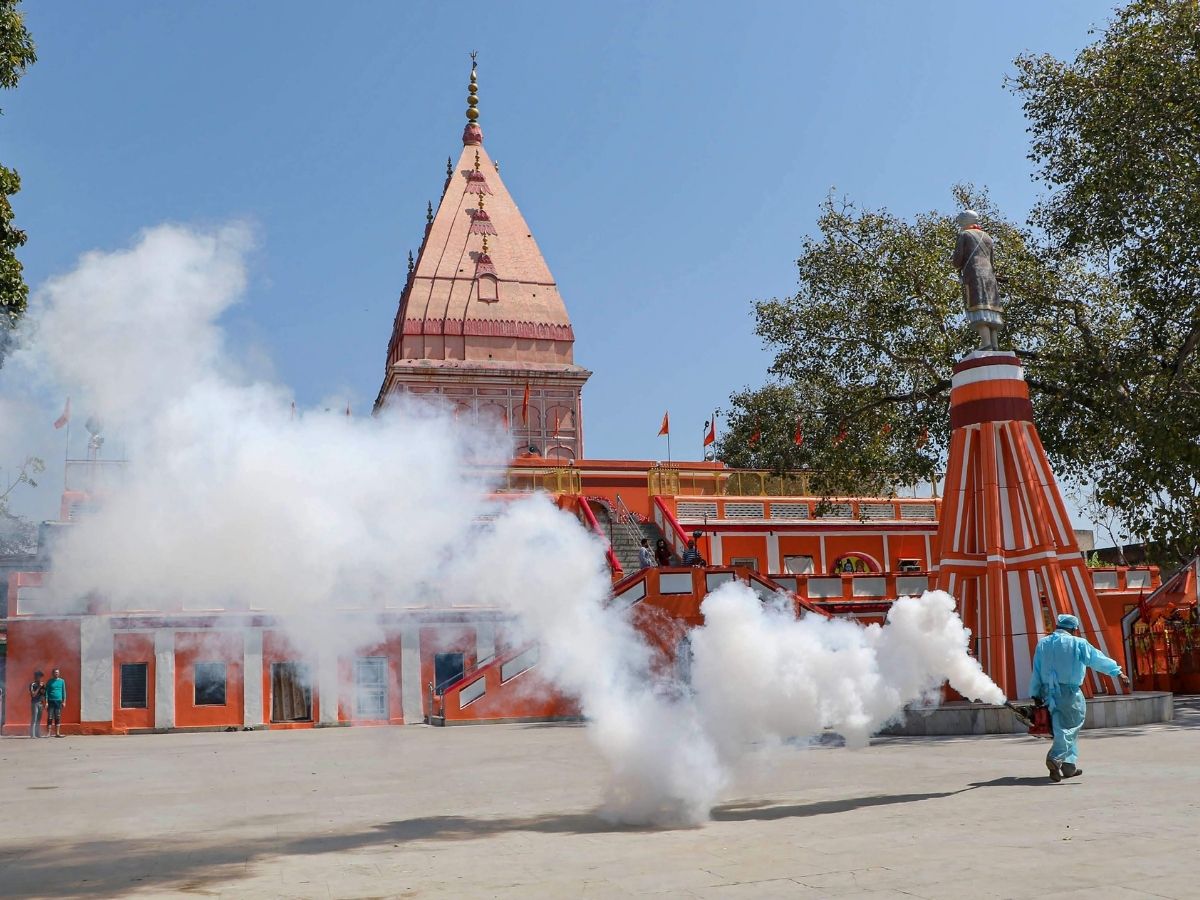When you step into Jammu, the city often called the “City of Temples,” one name stands out among its many shrines—Raghunath Temple. Towering spires, bustling courtyards, and the fragrance of incense drifting in the air—it’s not just a temple; it’s a world of its own.
I still remember my first visit. Walking down Residency Road, the heart of Jammu, I couldn’t miss the temple’s imposing shikharas (spires) rising against the sky. The closer I got, the more the everyday city noise seemed to fade, replaced by chants and the rhythmic ringing of bells. It was as if the temple pulled me into a different rhythm of life altogether.
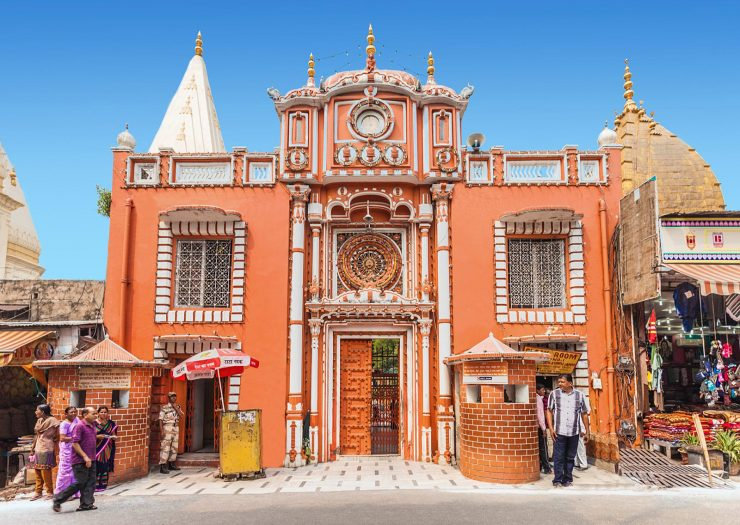
A Royal Beginning
The story of Raghunath Mandir begins in the 19th century under the Dogra rulers. Maharaja Gulab Singh, the founder of the Dogra dynasty, laid the foundation of the temple in 1835. Later, his son Maharaja Ranbir Singh completed it. Dedicated to Lord Rama (often addressed as Raghunath), the temple complex is one of the largest in North India.
Standing inside, you can sense that the kings who built it wanted it to be more than a place of worship—they wanted it to be a symbol of devotion, grandeur, and scholarship. The architecture, the vastness, and the energy of the place all reflect that royal vision.
Architecture That Captures the Eye
If you’re a lover of temple architecture, Raghunath Mandir won’t disappoint. The temple is a complex of seven shrines, each dedicated to different deities. But the central shrine belongs to Lord Rama, with his consort Sita and his loyal brother Lakshman.
The first thing that caught my eye was the gilded interiors—walls adorned with intricate carvings and paintings depicting stories from the Ramayana, Mahabharata, and even the Bhagavad Gita. The temple is almost like a gallery of Hindu mythology, where every corner has a story to tell.
The towering shikharas gleam in the sunlight, reminding me of the Nagara style of architecture often seen in North India. The main sanctum, with its peaceful aura, feels like the heart of this grand spiritual body.
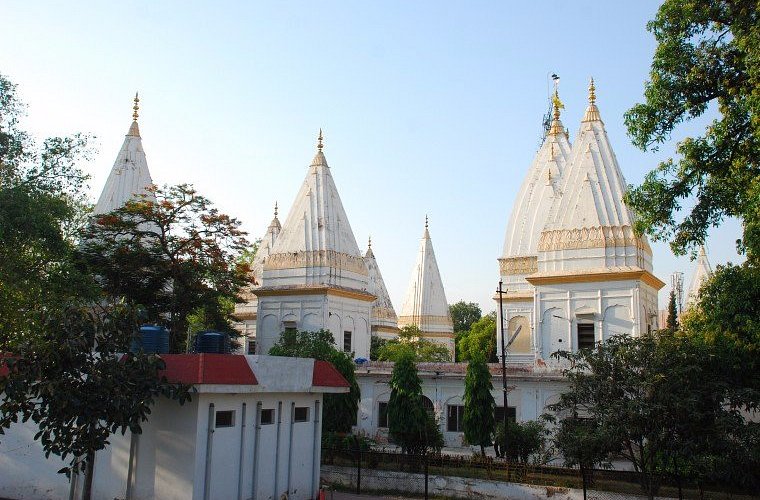
The History of Raghunath Mandir, Jammu
When you first stand in front of the grand Raghunath Mandir, right in the heart of Jammu city, it’s hard not to be struck by its sheer scale and majesty. But behind its towering shikhara and expansive courtyard lies a history that is just as captivating as its architecture. Every stone here whispers stories—not only about kings and dynasties, but also about the faith of ordinary people that has kept this temple alive for centuries.
The Vision of Maharaja Gulab Singh
The roots of Raghunath Mandir go back to the early 19th century. It was Maharaja Gulab Singh, the founder of the Dogra dynasty and the first ruler of Jammu and Kashmir, who envisioned this temple. A devoted follower of Lord Rama, he wanted a shrine that would reflect both his personal devotion and the cultural pride of his people.
Construction of the temple began around 1835 CE, but like most grand projects of that time, it took decades to complete. Gulab Singh laid the foundation, but the temple’s final touches were given by his son, Maharaja Ranbir Singh, who carried his father’s dream forward.
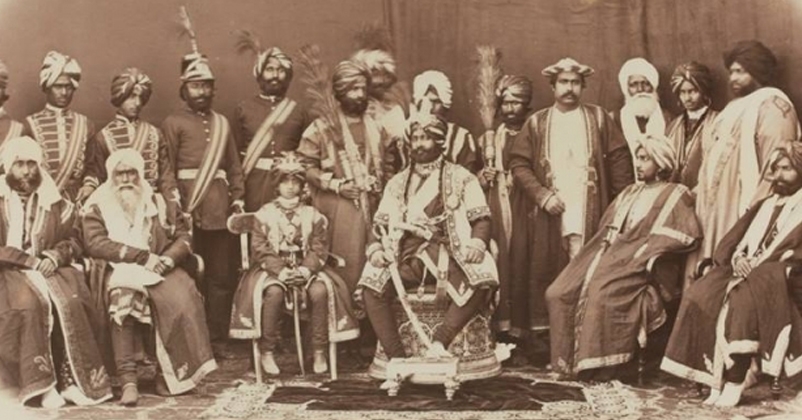
Why Lord Rama?
You may wonder: why dedicate such a massive temple to Lord Rama? For the Dogra rulers, Rama was more than just a deity. He was the embodiment of righteous kingship—Maryada Purushottam, the ideal king. By building a temple to Rama, Gulab Singh was not only expressing his faith but also drawing a symbolic connection between his dynasty and Rama’s legacy of just and moral rule.
This is why Raghunath Mandir isn’t just any shrine—it became a statement of political legitimacy and cultural identity for the Dogra dynasty.
A Marvel of Scale and Structure
When completed in 1860 under Maharaja Ranbir Singh, Raghunath Mandir emerged as one of the largest temple complexes in North India. It wasn’t designed as a single shrine but rather as a cluster of seven shrines, each with its own sanctum and deity.
The central shrine, of course, is dedicated to Lord Rama, along with Sita and Lakshman. Surrounding shrines honor various forms of Lord Vishnu, Shiva, Ganesh, and the Sun God, creating a complex that mirrors the inclusive and expansive nature of Hindu worship.
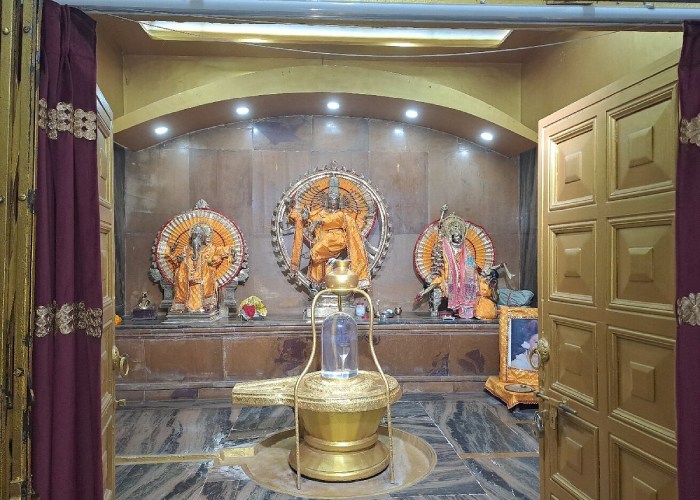
A Repository of Knowledge
One fascinating piece of history that often gets overlooked is how the temple became a center for learning. Maharaja Ranbir Singh, apart from completing the temple, also established a library within its premises. This library once held countless manuscripts—some in Sanskrit, some in Persian, and others in regional languages—covering philosophy, science, and theology.
It wasn’t just a place of worship but also a place where knowledge was preserved and passed down, reminding us of how temples often doubled as educational institutions in Indian history.
Survival Through Turbulent Times
Like much of Jammu and Kashmir, Raghunath Mandir has lived through turbulent times. Wars, invasions, and political upheavals tested its endurance. Yet, the temple stood firm, becoming not just a spiritual symbol but also a cultural anchor for the people of Jammu.
Even in more recent history, when Jammu witnessed periods of unrest, the temple continued to be a place where people sought solace and unity. Walking through its courtyards today, you can almost feel that resilience in the air.
Dogra Patronage and Legacy
It’s important to recognize that Raghunath Mandir is part of the broader Dogra legacy. The Dogras weren’t just warriors and rulers—they were also great patrons of art, architecture, and culture. Temples like Raghunath, Ranbireshwar, and several others across Jammu are lasting reminders of this legacy.
The temple complex also reflects their architectural taste: tall shikharas (spires) influenced by North Indian styles, intricate carvings that speak of local craftsmanship, and spacious courtyards designed for gatherings of large devotees.
The Temple in the Social Fabric of Jammu
Over the decades, Raghunath Mandir became much more than a royal project. It grew into the spiritual heart of Jammu city. For generations, locals have celebrated festivals, performed rituals, and marked life’s milestones here.
Even today, ask any local about their earliest memories of the temple, and they’ll likely tell you stories of visiting with their families during Navratri or Ram Navami, lighting diyas, and walking through the bustling bazaars that frame its entrance. The temple has woven itself into the personal histories of thousands of families.
The Spiritual Experience
While the grandeur of the architecture and the history is impressive, what really stayed with me was the devotional atmosphere. When I entered the main sanctum, the chanting of priests, the flickering oil lamps, and the smell of sandalwood created a powerful sense of calm.
I watched families come in with offerings of flowers and sweets, their faces glowing with devotion. Some people sat quietly in corners, simply soaking in the divine energy. For me, this balance of ritual, devotion, and personal reflection is what makes Raghunath Mandir such a special experience.
Festivals and Vibrancy
If you get a chance, time your visit with a festival. During Ram Navami, the temple comes alive like never before. The entire complex is decorated with lights, marigold garlands, and colorful rangolis. I once visited during this festival, and the energy was electric—devotees singing bhajans, the air thick with incense, and a sense of celebration that spilled into the streets of Jammu.
Other festivals like Diwali and Dussehra also bring the temple alive, with special rituals and processions. It’s not just a religious experience; it’s a cultural immersion.
Nearby Attractions and Experiences
One of the best parts about visiting Raghunath Mandir is that it’s right in the beating heart of Jammu. The temple itself is extraordinary, but step outside, and you’ll realize there’s a whole world of culture, history, and flavors waiting for you. I remember finishing my darshan at the temple and then letting the day unfold through the city’s streets, gardens, and bazaars. If you’re planning your own trip, here are some nearby attractions and experiences that will turn your temple visit into a full Jammu adventure.
1. Raghunath Bazaar – The Shopper’s Paradise
The moment you step out of the temple, you’re practically in the middle of Raghunath Bazaar. This bustling marketplace is an experience in itself. Rows of shops spill over with colorful handicrafts, dry fruits, saffron, and traditional Dogra jewelry.
When I visited, I couldn’t resist picking up a packet of Kashmiri saffron and some hand-carved wooden souvenirs. Bargaining is part of the fun here, so don’t shy away from haggling a little. And even if shopping isn’t your thing, just walking through the bazaar, soaking in the noise, colors, and aromas, is a treat for the senses.
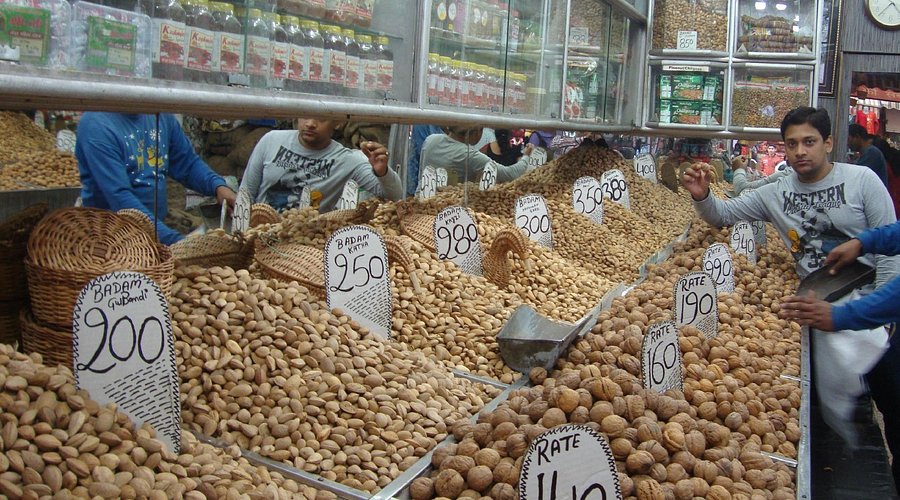
2. Mubarak Mandi Palace – A Royal Glimpse
Just a short ride from Raghunath Mandir lies the Mubarak Mandi Palace, the former seat of Dogra rulers. Its architecture is a fascinating mix of Rajasthani, Mughal, and European influences. Though parts of the palace are in ruins, the grandeur still whispers stories of royalty and power.
The Dogra Art Museum, housed in one wing of the palace, is worth a visit. Here, you’ll find Pahari paintings, ancient manuscripts, and artifacts that tell the story of Jammu’s rich cultural past. I spent over an hour wandering through the museum, imagining the palace in its glory days.
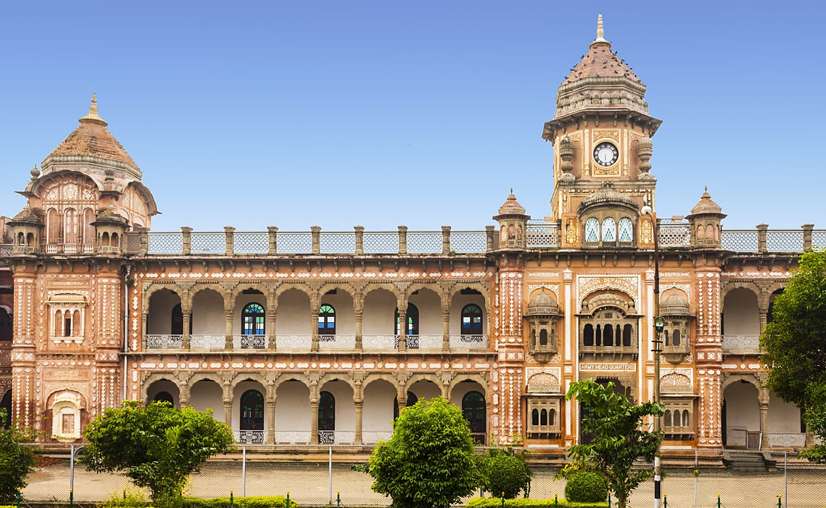
3. Ranbireshwar Temple – Another Gem for Shiva Devotees
If Raghunath Mandir is dedicated to Lord Rama, Ranbireshwar Temple is the place for Shiva devotees. Built by Maharaja Ranbir Singh in the 19th century, it’s one of the largest Shiva temples in North India.
The temple is famous for its giant Shiva lingam, carved out of a single black marble stone, along with thousands of smaller lingams that line the sanctum. The spiritual energy here is palpable, and it complements the devotion you feel at Raghunath Mandir beautifully.
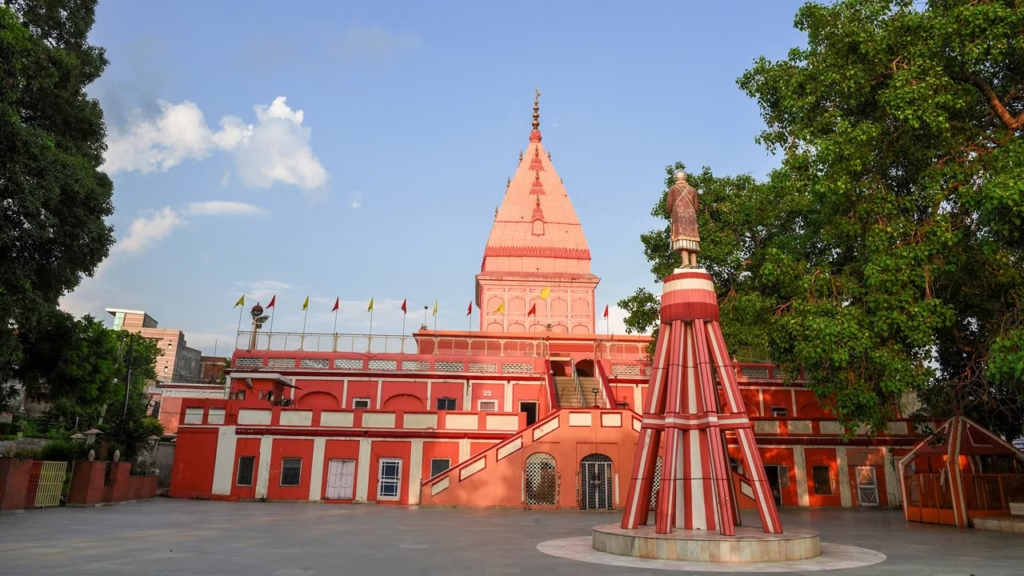
4. Bahu Fort and Bawe Wali Mata Temple
No trip to Jammu feels complete without a visit to Bahu Fort. Perched on a hill overlooking the Tawi River, this fort dates back over 3,000 years, originally built by Raja Bahulochan. The fort itself is imposing, but what truly draws visitors is the Bawe Wali Mata Temple inside its premises.
Dedicated to Goddess Kali, this temple is one of the most revered shrines in the region. I visited in the evening, and the combination of fort walls, temple bells, and the river view below made it feel otherworldly. If you can, try to visit on a Sunday, when special prayers take place.

5. Bagh-e-Bahu – A Green Escape
Right next to Bahu Fort, you’ll find the Bagh-e-Bahu gardens. If you need a breather after the spiritual intensity of the temples, this is the spot. The terraced gardens are filled with fountains, flowering plants, and shaded corners where you can sit and watch the Tawi River flow below.
I saw families enjoying picnics, couples strolling, and kids running through the open spaces. It’s one of those places where the locals relax, so you get a real taste of everyday life in Jammu. And yes—the aquarium here is surprisingly fun if you’re traveling with kids.
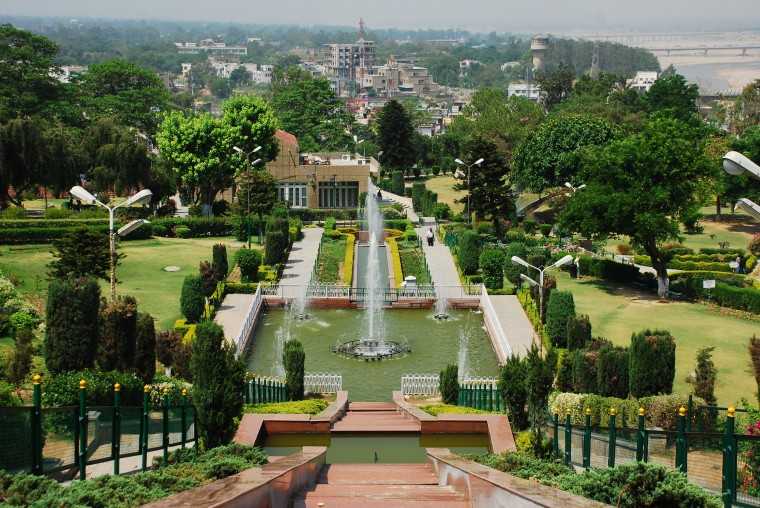
6. Amar Mahal Palace – A Walk Through Heritage
Another must-visit near Raghunath Mandir is the Amar Mahal Palace. Built in the 19th century by Raja Amar Singh, the palace now functions as a museum. Its French-influenced architecture stands out, and the palace offers some of the best views of the Tawi River and the city beyond.
Inside, the museum displays Dogra artifacts, royal family portraits, and even a golden throne weighing over 100 kilograms! For me, what stood out was how quiet the palace felt compared to the bustling streets—a place where history speaks softly, but powerfully.
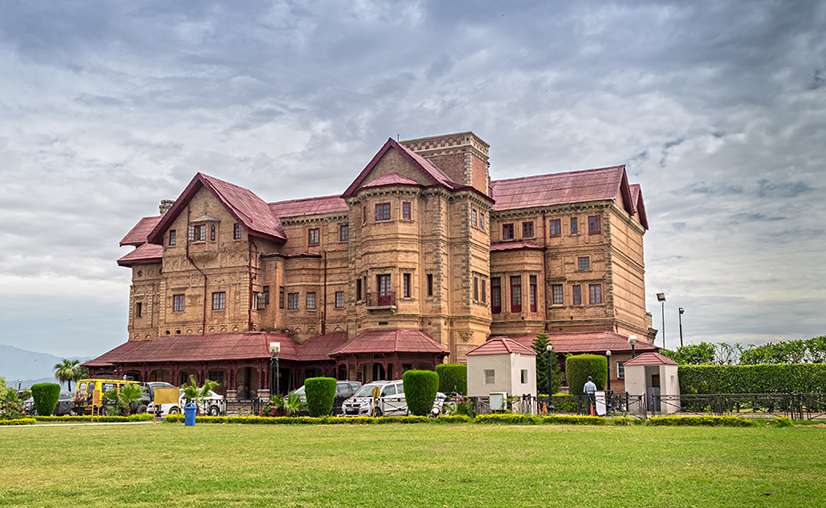
7. Peer Kho Cave Temple – The Ancient Connection
If you’re up for a slightly offbeat experience, head to the Peer Kho Cave Temple, also known as the “Cave Temple of the Rishis.” Dedicated to Lord Shiva, this temple is believed to date back thousands of years, with legends linking it to the Ramayana era.
The temple is set inside natural caves, and stepping in feels like entering another world. The cool air, the dimly lit sanctum, and the sense of ancient devotion make it very different from the grandeur of Raghunath Mandir. It’s a reminder of how faith in Jammu comes in many forms—grand temples, cave shrines, and hilltop forts.
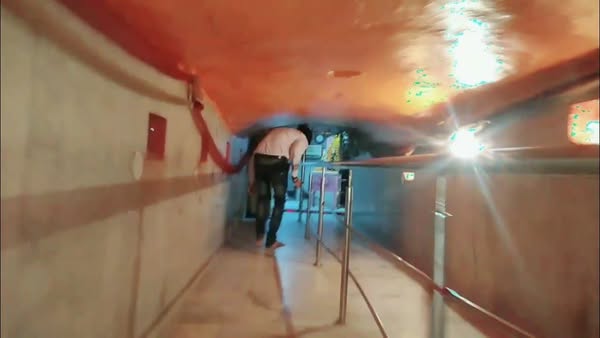
8. Local Food Experiences Around Raghunath Mandir
Exploring nearby attractions is incomplete without tasting the local flavors. Just a short walk from the temple, you’ll find small eateries serving Jammu’s famous rajma chawal—red kidney beans cooked in rich spices, paired with rice. It’s a simple dish, but in Jammu, it tastes like comfort food at its finest.
Don’t miss out on kaladi kulcha (a local cheese grilled and served with bread), and for something sweet, grab a serving of patisa or chocolate barfi from nearby sweet shops. I spent an afternoon hopping between stalls, and honestly, the food was as memorable as the temples.
Suggested Half-Day Itinerary
If you want to combine Raghunath Mandir with nearby attractions, here’s a suggested flow:
- Morning: Start with darshan at Raghunath Mandir, then wander through Raghunath Bazaar.
- Late Morning: Head to Mubarak Mandi Palace and the Dogra Art Museum.
- Lunch: Stop for rajma chawal at a local dhaba.
- Afternoon: Visit Bahu Fort and Bawe Wali Mata Temple, then relax in Bagh-e-Bahu gardens.
- Evening: End with a sunset visit to Amar Mahal Palace or Peer Kho Cave Temple for a peaceful close.
Practical Tips for Travelers
- Location: The temple is located on Residency Road, right in the heart of Jammu city. It’s easily accessible from most parts of the city.
- Timings: The temple is generally open from early morning till late evening, but mornings are the most peaceful time to visit.
- Dress Code: Modest clothing is recommended. Remember, it’s an active place of worship.
- Security: Due to its importance, the temple often has security checks at the entrance, so keep your IDs handy.
- Photography: Inside photography may be restricted, so it’s best to ask before taking pictures.
Beyond the Temple
What I love about Raghunath Mandir is that it doesn’t exist in isolation. Right outside its gates, you’ll find bustling bazaars selling everything from religious artifacts to Kashmiri handicrafts. I bought a few small souvenirs—a copper diya and a box of saffron—that still remind me of that trip.
And if you’re in Jammu, combine your temple visit with a food stop. Don’t miss the local rajma chawal (red kidney beans with rice), a Jammu specialty that tastes best in the small dhabas scattered around the city.
Why Raghunath Mandir Stands Out
There are countless temples dedicated to Lord Rama across India, but Raghunath Mandir stands out for its scale, history, and scholarship. It’s not just a temple to offer prayers—it’s a cultural institution, a library, and a reminder of Jammu’s royal heritage.
For me, the temple offered more than a spiritual experience. It gave me a glimpse into the vision of the Dogra rulers, the devotion of the people, and the way a single temple can become a living, breathing symbol of a city’s identity.
FAQs (10)
Q1. Where is Raghunath Temple located?
It is located in the heart of Jammu city, Jammu & Kashmir.
Q2. Who built the Raghunath Temple?
The temple was commissioned by Maharaja Gulab Singh in 1835 and completed by his son Maharaja Ranbir Singh in 1860.
Q3. Which deity is worshipped at Raghunath Temple?
The main deity is Lord Rama (Raghunath), along with shrines of other Hindu gods and goddesses.
Q4. Why is Raghunath Temple famous?
It is one of the largest temple complexes in North India, with seven shrines dedicated to different deities.
Q5. What are the temple timings?
The temple is open from early morning to evening, with regular aarti and puja ceremonies.
Q6. Is there any entry fee?
No, entry to the temple is free for all visitors.
Q7. What is the best time to visit Raghunath Temple?
October to March is ideal, when the weather is pleasant in Jammu.
Q8. What festivals are celebrated here?
Rama Navami, Diwali, and Dussehra are celebrated with great devotion and festivities.
Q9. Are mobile phones allowed inside the temple?
Due to security reasons, mobile phones and electronic gadgets may be restricted.
Q10. How can one reach Raghunath Temple?
The temple is well-connected by road within Jammu city; the nearest railway station is Jammu Tawi, and the nearest airport is Jammu Airport.

